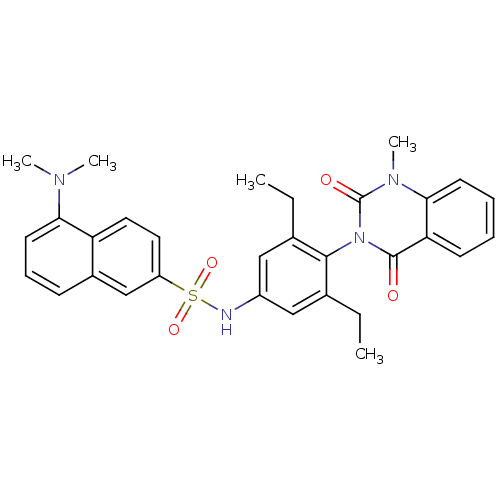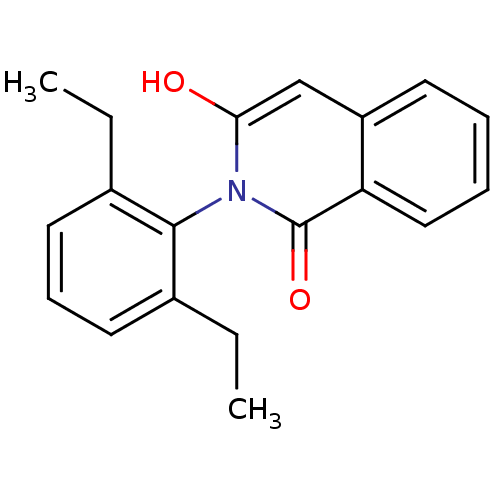TargetPuromycin-sensitive aminopeptidase(Homo sapiens (Human))
The University Of Tokyo
Curated by ChEMBL
The University Of Tokyo
Curated by ChEMBL
Affinity DataIC50: 2.90E+3nMAssay Description:Puromycin sensitive aminopeptidase inhibitory activity of the compound was determined by the use of L-Ala AMC with MOLT-4More data for this Ligand-Target Pair
TargetPuromycin-sensitive aminopeptidase(Homo sapiens (Human))
The University Of Tokyo
Curated by ChEMBL
The University Of Tokyo
Curated by ChEMBL
Affinity DataIC50: 3.40E+3nMAssay Description:Puromycin sensitive aminopeptidase inhibitory activity of the compound was determined by the use of L-Ala AMC with MOLT-4More data for this Ligand-Target Pair
TargetPuromycin-sensitive aminopeptidase(Homo sapiens (Human))
The University Of Tokyo
Curated by ChEMBL
The University Of Tokyo
Curated by ChEMBL
Affinity DataIC50: 3.80E+3nMAssay Description:Puromycin sensitive aminopeptidase inhibitory activity of the compound was determined by the use of L-Ala AMC with MOLT-4More data for this Ligand-Target Pair
TargetPuromycin-sensitive aminopeptidase(Homo sapiens (Human))
The University Of Tokyo
Curated by ChEMBL
The University Of Tokyo
Curated by ChEMBL
Affinity DataIC50: 4.60E+3nMAssay Description:Puromycin sensitive aminopeptidase inhibitory activity of the compound was determined by the use of L-Ala AMC with MOLT-4More data for this Ligand-Target Pair
TargetPuromycin-sensitive aminopeptidase(Homo sapiens (Human))
The University Of Tokyo
Curated by ChEMBL
The University Of Tokyo
Curated by ChEMBL
Affinity DataIC50: 7.80E+3nMAssay Description:Puromycin sensitive aminopeptidase inhibitory activity of the compound was determined by the use of L-Ala AMC with MOLT-4More data for this Ligand-Target Pair





